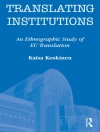This volume is the first comprehensive guide to current research on animals, animality, and human-animal relations in literature. To reflect the history of literary animal studies to date, its primary focus is literary prose and poetry in English, while also accommodating emergent discussions of the full range of media and contexts with which literary studies engages, especially film and critical theory. User-friendly language, references, even suggestions for further readings are included to help newcomers to the field understand how it has taken shape primarily through recent decades. To further aid teachers, sections are organized by conventions of periodization, and chapters address a range of canonical and popular texts. Bookended by sections devoted to the field’s conceptual foundations and new directions, the volume is designed to set an agenda for literary animal studies for decades to come.
Inhoudsopgave
1. Introduction: Towards and Animal-centred Literary History; Susan Mc Hugh, Robert Mc Kay and John Miller.- 2. The Exception and the Norm: Dimensions of Anthropocentrism; Tom Tyler.- 3. Metaphor, Metonymy, More-than-Anthropocentric. The Animal that therefore I Read (and Follow); Ann-Sofie Lönngren.- 4. Narratology beyond the Human: Self-Narratives and Inter-Species Identities; David Herman.- 5. An(im)alogical Thinking: Contemporary Black Literature and the Dreaded Comparison; Diana Leong.- 6. We Are not in this World Alone: On Drawing Close, Animal Stories, and a Multispecies Sense of Place; Nandini Thiyagarajan.- 7. A Community of Exiles: Whale and Human Domains in Old English Poetry; Megan Cavell.- 8. An Ontological Turn for the Medieval Books of Beasts: Environmental Theory from Premodern to Postmodern; Susan Crane.- 9. Chaucer, Lydgate, and the Half-Heard Nightingale; Carolynn Van Dyke.- 10. Huntings of the Hare: The Medieval and Early Modern Poetry of Imperilled Animals; Karl Steel.- 11. Human, Animal, and Metamorphic Becomings; Carla Freccero.- 12. Sheep, Beasts, and Knights: Fugitive Alterity in Edmund Spenser’s The Faerie Queene Book VI, and The Shepheardes Calender; Rachel Stenner.- 13. My Palfrey, Myself: Toward a Queer Phenomenology of the Horse-Human Bond in Henry V and Beyond; Karen Raber.- 14. What Can Beast Fables Do in Literary Animal Studies? Ben Jonson’s Volpone and the Prehumanist Human; Erica Fudge.- 15. “Real” Animals and the Eighteenth-Century Literary Imagination; Laura Brown.- 16. Mary Leapor’s Creatureliness in “An Essay on Woman” and Other Poems; Anne Milne.- 17. Poetics of the Hunt: Re-reading Agency and Re-thinking Ecology in William Somerville’s The Chase; Richard Nash.- 18. Beyond Symbolism: The Rights and Biopolitics of Romantic Period Animals; Ron Broglio.- 19. Bad Dog: The Dark Side of Misbehaving Animals; Chase Pielak.- 20. Why Animals Matter in Jane Austen; Barbara Seeber.- 21. John Keats and the Sound of Nature: Reading Poetry in a Time of Extinction; Michael Malay.- 22. Cooper’s Animal Offences: The Confusion of Species in Last of the Mohicans; Onno Oerlemans.- 23. Jane Eyre and Tess Durbeyfield at the Human/Animal Border; Ivan Kreilkamp.- 24. Animals and Nonsense: Edward Lear’s Menagerie; Ann Colley.- 25. Intimacy, Objectification, and Inter/Intra-Species Relations in Victorian Animal Autobiographies; Monica Flegel.- 26. How Not to Eat: Vegetarian Polemics in Victorian India; Parama Roy.- 27. Modernist Animals and Bioaesthetics; Carrie Rohman.- 28. Vivisection in Modernist Culture and Popular Fiction, 1890–1945; Katherine Ebury.- 29. Virginia Woolf and Gertrude Stein: Two Modernist Women Writing as Dogs; Marianne Dekoven.- 30. Kingship, Kinship and the King of Beasts in Early Southern African Novels; Jade Munslow Ong.- 31. Animals Inside: Creatureliness in Dezső Kosztolányi’s Skylark and Hanya Yanagihara’s A Little Life; Anat Pick.- 32. Speculative Humanisms: Postwar Universalism and the Question of the Animal; Seán Mc Corry.- 33. Can Lit’s Ossiferous Fictions: Animal Bones and Fossils in Margaret Atwood’s Life Before Man and Carol Shields’s The Stone Diaries; Sarah Bezan.- 34. Returning to the Animals’ Gaze: Reflective Readings of Lionesses Marah and Sekhmet; Wendy Woodward.- 35. “Without the right words it’s hard to retain clarity”: Speculative Fiction and Animal Narrative; Sherryl Vint.- 36. Jesmyn Ward’s Dog Bite: Mississippi Love and Death Stories; Bénédicte Boisseron.- 37. Shared and Hefted Lives in Twenty-First Century Shepherds’ Calendars; Catherine Parry.- 38. The Biopolitics of Animal Love: Two Settler Stories; Nicole Shukin.- 39. Companion Prosthetics: Avatars of Animality and Disability; Michael Lundblad and Jan Grue.- 40. Denizen Habitations: Spaces of Solidarity in Recent South Asian Fiction; Sundhya Walther.- 41. Plagues, Poisons, Dead Rats: In Search of a Medical Posthumanities; Lucinda Cole.- 42. Last Chance to See: Extinction in Literary Animal Studies and the Environmental Humanities; John Miller.
Over de auteur
Susan Mc Hugh is Professor of English at the University of New England, USA, and author most recently of Love in a Time of Slaughters: Human-Animal Stories against Genocide and Extinction (2019).
Robert Mc Kay is Professor of Contemporary Literature at the University of Sheffield, UK. His collaborative books include Werewolves, Wolves and the Gothic (2017), Against Value in the Arts and Education (2016), and Killing Animals (2006). John Miller is Senior Lecturer in Nineteenth-Century Literature at the University of Sheffield, UK, and President of ASLE-UKI (Association for the Study of Literature and the Environment, UK & Ireland). He is the author of
Empire and the Animal Body (2012), and the co-author of
Walrus (2014).
Mc Hugh, Mc Kay, and Miller co-edit the Palgrave Studies in Animals and Literature book series.












